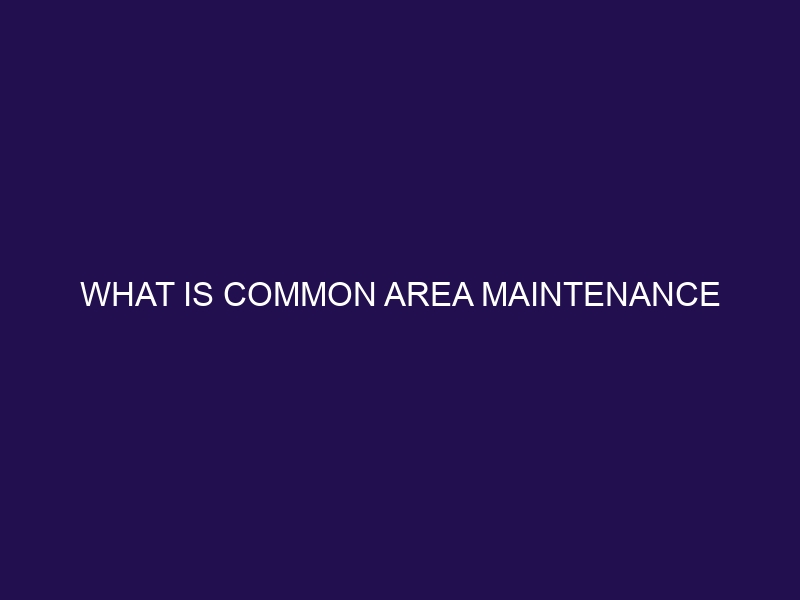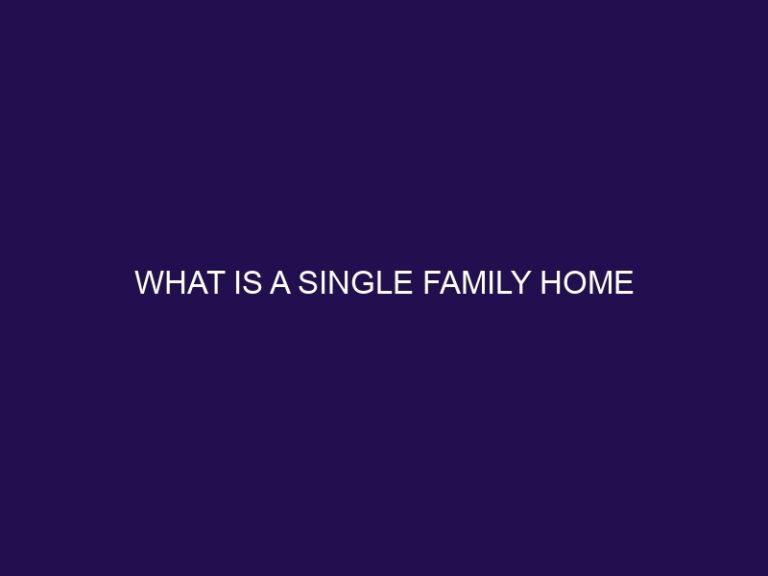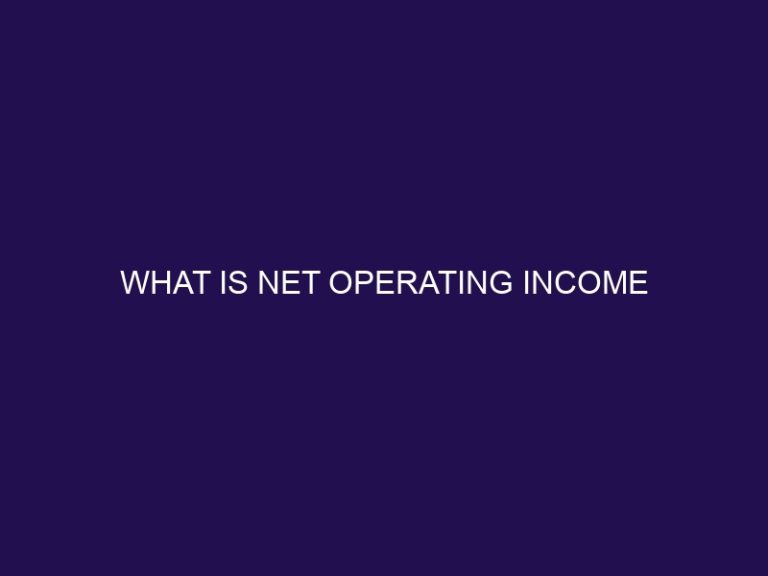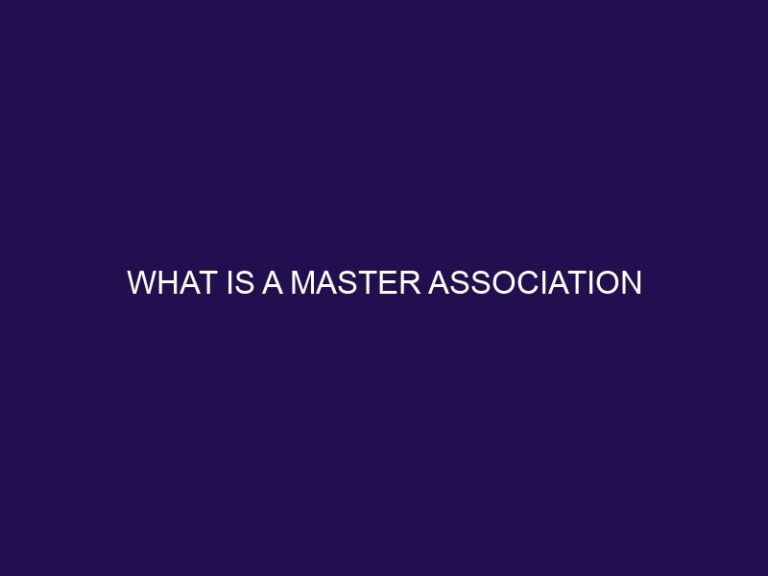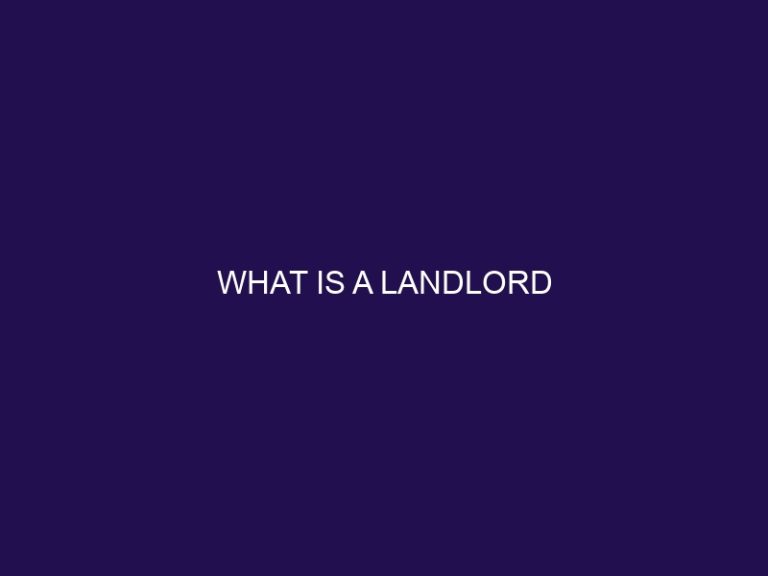What is Common area maintenance
Common area maintenance (CAM) refers to the costs associated with the upkeep and maintenance of shared spaces in a property that is collectively used by multiple tenants or occupants. These common areas typically include lobbies, hallways, elevators, parking lots, and recreational facilities. Understanding CAM charges is essential for both tenants and property owners alike.
CAM charges cover various expenses and are typically shared among all tenants or occupants in a building or complex. They are meant to ensure that the common areas are well-maintained, safe, and functional for everyone’s use.
Common area maintenance refers to the responsibility of property owners or landlords to oversee the maintenance and management of these shared spaces. They are required to carry out regular cleaning, repairs, landscaping, security measures, and other necessary services to maintain the value and appeal of the property.
The components of common area maintenance include landscaping and grounds maintenance, repair and maintenance of shared facilities, security and surveillance measures, utilities and energy costs, and insurance and property taxes. These costs are divided among all tenants based on predefined allocation methods and cost sharing ratios.
Calculating CAM charges can vary depending on the property and lease agreements. Different methods such as square footage allocation, percentage allocation, or equal sharing may be used to determine each tenant’s share of the expenses. Common cost sharing ratios may also be established to fairly distribute the costs based on factors like usage or occupancy levels.
Controversies and disputes regarding common area maintenance can arise when there is a lack of transparency, disagreements over the allocation methods, or disputes regarding the extent of maintenance and services provided. It is important for tenants and property owners to communicate effectively, review lease agreements carefully, and address any concerns promptly to avoid conflicts.
Managing common area maintenance expenses efficiently involves budgeting, regular communication, and proactive maintenance. Property owners and tenants should work together to establish clear responsibilities, set realistic budgets, and ensure that maintenance tasks are performed promptly and efficiently.
By understanding the concept of common area maintenance and effectively managing the associated expenses, both tenants and property owners can contribute to a well-maintained, safe, and attractive property that benefits everyone involved.
What is Common Area Maintenance?
What is Common Area Maintenance? Common Area Maintenance (CAM) refers to the expenses incurred for the upkeep and maintenance of shared spaces in properties like shopping centers or office buildings. These expenses are typically borne by tenants through payments called CAM charges. Common services covered under CAM include landscaping, cleaning, security, repairs, and utilities for shared areas. CAM charges are usually calculated based on tenants’ proportionate share of the total rentable area. By sharing these costs, tenants ensure that the common areas remain clean, well-maintained, and attractive, enhancing the overall value of the property.
True story: Sarah leased a space in a shopping center and was initially unaware of what common area maintenance was. She soon realized the benefits when she saw how the meticulous upkeep of the center attracted more customers and created a pleasant shopping experience for everyone. Through CAM charges, Sarah and her fellow tenants were able to contribute to the continuous improvement and success of the shopping center.
Understanding Common Area Maintenance Charges
Understanding common area maintenance charges is crucial for both tenants and property owners. These charges, which encompass the expenses involved in maintaining and operating shared spaces like hallways, lobbies, and parking lots, are essential for the upkeep of the property. Typically, these fees are allocated among tenants based on their respective square footage. By comprehending these charges, tenants can effectively plan and budget, while property owners can ensure the proper maintenance of common areas. It is imperative for both parties to thoroughly review lease agreements to gain clear insights into the specific items and services covered by common area maintenance charges.
What Does Common Area Maintenance Refer To?
Common area maintenance refers to the upkeep and management of shared spaces within a property or building complex. These areas typically include lobbies, hallways, parking lots, elevators, and common recreational facilities. The responsibility for common area maintenance lies with the property owner or the homeowners’ association. It involves various components such as landscaping and grounds maintenance, repair and maintenance of shared facilities, security and surveillance, utilities and energy costs, as well as insurance and property taxes. Common area maintenance charges are calculated based on allocation methods and common cost sharing ratios. Effective management of these expenses is crucial to ensure the proper functioning and maintenance of shared spaces.
What Does Common Area Maintenance Refer To?
The concept of common area maintenance dates back to ancient times when communities cooperatively maintained shared spaces. In medieval towns, residents contributed to the upkeep of marketplaces and public squares. In the modern era, common area maintenance has become vital in condominiums, commercial buildings, and residential complexes, ensuring the preservation and enhancement of shared spaces for the benefit of all occupants.
Who is Responsible for Common Area Maintenance?
Who is Responsible for Common Area Maintenance?
The responsibility for common area maintenance lies with the property owner or the collective group of property owners within a shared space. They are responsible for ensuring that the common areas, such as landscaping, shared facilities, security, utilities, insurance, and property taxes, are well-maintained. The property owner or the homeowners’ association is commonly responsible for overseeing and managing these maintenance tasks. It is essential to establish clear guidelines and allocate common area maintenance charges fairly among the property owners. Controversies and disputes regarding common area maintenance can arise when there are disagreements over the distribution of maintenance responsibilities or the calculation of charges. Effective management and communication can help in efficiently managing common area maintenance expenses.
Components of Common Area Maintenance
When it comes to Common Area Maintenance, understanding its components is key. In this section, we’ll dive into the different aspects that make up Common Area Maintenance. From landscaping and grounds maintenance to repair and maintenance of shared facilities, we’ll cover it all. We’ll touch upon important factors such as security and surveillance, utilities and energy costs, as well as insurance and property taxes. So, buckle up and get ready to explore the essentials of Common Area Maintenance.
Landscaping and Grounds Maintenance
Landscaping and grounds maintenance are crucial aspects of common area maintenance (CAM) for property owners and tenants.
- Regular upkeep: CAM fees encompass the cost of preserving the aesthetic appeal of shared outdoor spaces, including lawns, gardens, trees, and flowers.
- Landscaping services: CAM funds are utilized to enlist professional landscapers who offer services such as mowing, pruning, trimming, and planting.
- Seasonal maintenance: CAM charges include expenses for seasonal tasks like leaf removal, snow removal, and irrigation system maintenance.
- Improvements and enhancements: CAM funds may also be allocated towards sporadic enhancements to elevate the overall appearance of the landscaping, such as introducing new plants or installing outdoor amenities.
One property owner who invested in exceptional landscaping and grounds maintenance experienced notable increases in tenant satisfaction and property value, attracting a greater number of potential tenants and leading to elevated rental rates.
Repair and Maintenance of Shared Facilities
- To effectively manage the repair and maintenance of shared facilities within common areas, it is essential to conduct regular inspections. These inspections will help identify any issues or areas that require repair or maintenance.
- One important step is to establish a maintenance schedule. This schedule should include regular tasks such as cleaning, painting, and equipment servicing.
- It is crucial to prioritize repairs based on their urgency. By addressing critical issues promptly, further damage or safety hazards can be prevented.
- To ensure high-quality repairs and maintenance, it is recommended to hire qualified contractors. Look for reputable and skilled professionals who can handle the tasks effectively.
- Creating a budget specifically for shared facility repairs and maintenance is necessary. Allocate funds to ensure timely and effective management of these areas.
- Maintaining open lines of communication with residents or tenants is vital. This will help promptly address any concerns they may have regarding shared facilities.
By following these steps, you can effectively ensure that the repair and maintenance of shared facilities within common areas are properly managed.
Security and Surveillance
Security and surveillance play a critical role in maintaining common areas. By implementing effective measures, the safety and protection of residents and their property can be ensured. When it comes to security and surveillance in common areas, the following key areas should be considered:
- Installing CCTV cameras to monitor common spaces and deter potential criminals.
- Regularly maintaining and testing security systems, including alarms and access control.
- Engaging professional security personnel to patrol and monitor common areas.
- Implementing proper lighting in all common areas to enhance visibility and discourage criminal activities.
- Making sure proper signage and emergency communication systems are in place.
In a busy urban area, an apartment complex faced security concerns due to a rise in theft incidents. Therefore, they decided to invest in a comprehensive security and surveillance system, which included cameras, access control, and 24/7 security personnel. As a result, the number of theft incidents significantly decreased, providing residents with peace of mind and improving the overall safety of the community.
Utilities and Energy Costs
Utilities and energy costs are important components of common area maintenance expenses in shared spaces.
- Electricity: The cost of lighting, elevators, HVAC systems, and other electrical equipment.
- Water: Expenses associated with water supply, irrigation, and plumbing systems.
- Gas: Costs related to heating, cooking, and other gas-powered systems.
- Trash and recycling: Expenses for waste management and recycling services.
- Internet and telecommunications: Charges for internet, phone lines, and cable TV services.
Efficient management and monitoring of utilities and energy costs can help minimize expenses and promote sustainability in common areas.
Insurance and Property Taxes
When it comes to common area maintenance charges, insurance and property taxes are two key factors to consider. These expenses play a crucial role in the overall costs that tenants or property owners have to bear for maintaining shared spaces. Insurance provides coverage for any potential damages or liabilities that may occur in these common areas, ensuring protection. On the other hand, property taxes contribute to the upkeep and management of these spaces.
It is of utmost importance for property managers and owners to accurately calculate and allocate these charges in order to ensure fair distribution among the tenants. This fair allocation helps avoid disputes that may arise regarding the allocation of insurance and property tax costs. Proper management and documentation of all expenses are essential in order to avoid conflicts in relation to these charges.
Calculating Common Area Maintenance Charges
Unraveling the complexities of allocating CAM charges and sharing common costs. Discover the precise methods employed to calculate and distribute CAM charges among tenants. Explore the various cost-sharing ratios utilized to ensure fairness and transparency in maintaining shared spaces. No more mystery surrounding CAM charges—let’s dive into the nitty-gritty details of their calculation and distribution.
Allocation Methods for CAM Charges
| Allocation Method | Description |
|---|---|
| Equal Allocation | The total CAM charges are evenly divided among all tenants. |
| Pro-Rata Allocation | The CAM charges are allocated based on the size or square footage of each tenant’s leased space. |
| Traffic Count Allocation | The CAM charges are assigned based on the amount of customer traffic generated by each tenant. |
| Gross Lease Allocation | The landlord covers all CAM expenses and includes them in the overall lease rate for each tenant. |
| Expense Stop Allocation | The landlord sets a base amount for CAM charges, and any excess costs beyond that are passed on to the tenants. |
Allocation Methods for CAM Charges
Common Cost Sharing Ratios
| Common Cost Sharing Ratios | Property Type | Cost Sharing Ratio |
| Common Cost Sharing Ratios | Commercial | Percentage of square footage |
| Common Cost Sharing Ratios | Residential | Equal sharing among units |
| Common Cost Sharing Ratios | Industrial | Based on property value |
Different property types have different Common Cost Sharing Ratios. In commercial properties, the ratio is often determined by the percentage of square footage each tenant occupies. Residential properties typically have an equal sharing ratio among all units. Industrial properties, on the other hand, may calculate the ratio based on the value of each property. These ratios ensure that the costs of common area maintenance are distributed fairly among the occupants.
Fact: Did you know that Common Cost Sharing Ratios can also be influenced by factors such as lease agreements and property management decisions?
Controversies and Disputes Regarding Common Area Maintenance
In the realm of common area maintenance (CAM), controversies and disputes regarding common area maintenance are an unfortunate reality. Conflicts can arise between tenants and landlords or among tenants themselves over issues like CAM fee allocation, transparency, and misuse of funds. Disputes may also arise regarding the scope of CAM responsibilities and the quality of maintenance provided. To minimize conflicts, clear communication, regular updates on maintenance activities, and transparency in financial dealings are crucial. Resolving disputes through negotiation or mediation can prevent costly legal battles. Fact: A survey found that approximately 40% of commercial real estate disputes involve disputes over CAM charges.
Tips for Managing Common Area Maintenance Expenses
Managing common area maintenance expenses can be challenging, but with proper planning and organization, it can be made easier. Here are some tips for managing common area maintenance expenses:
Frequently Asked Questions
What is common area maintenance (CAM) in commercial leases?
Common Area Maintenance (CAM) fees are costs that tenants pay in commercial leases for areas that are common to all tenants. This includes shared spaces outside of the tenant’s specifically leased area, such as hallways, bathrooms, and parking lots.
What expenses are covered by CAM charges?
CAM fees cover the upkeep of common areas, including maintenance, repairs, snow removal, landscaping, and other operating costs. They can also include expenses like security systems, permits, taxes, insurance, advertising, utilities, and even rent.
How are CAM charges calculated?
CAM costs are typically calculated on a per-square-footage basis. Each tenant pays a prorated share of the total CAM charges based on the amount of space they have rented in relation to the overall size of the property.
Are there any limits on CAM charges?
Some leases may include caps and floors to limit the changes in CAM charges over time. Caps restrict the annual increase in charges, while floors ensure a minimum increase, even if there is no inflation in a given year.
What is the difference between CAM charges and operating expenses?
CAM charges specifically cover the costs of maintaining common areas shared with other tenants, while operating expenses encompass the overall cost of running the building, including utilities, repairs, insurance, and property tax. CAM charges do not include property tax and insurance.
How often are CAM charges billed to tenants?
The landlord sets an annual budget for maintenance and bills tenants monthly for CAM charges. There is typically a final true-up payment at the beginning of the next year to reconcile any differences between the estimated and actual CAM expenses.

